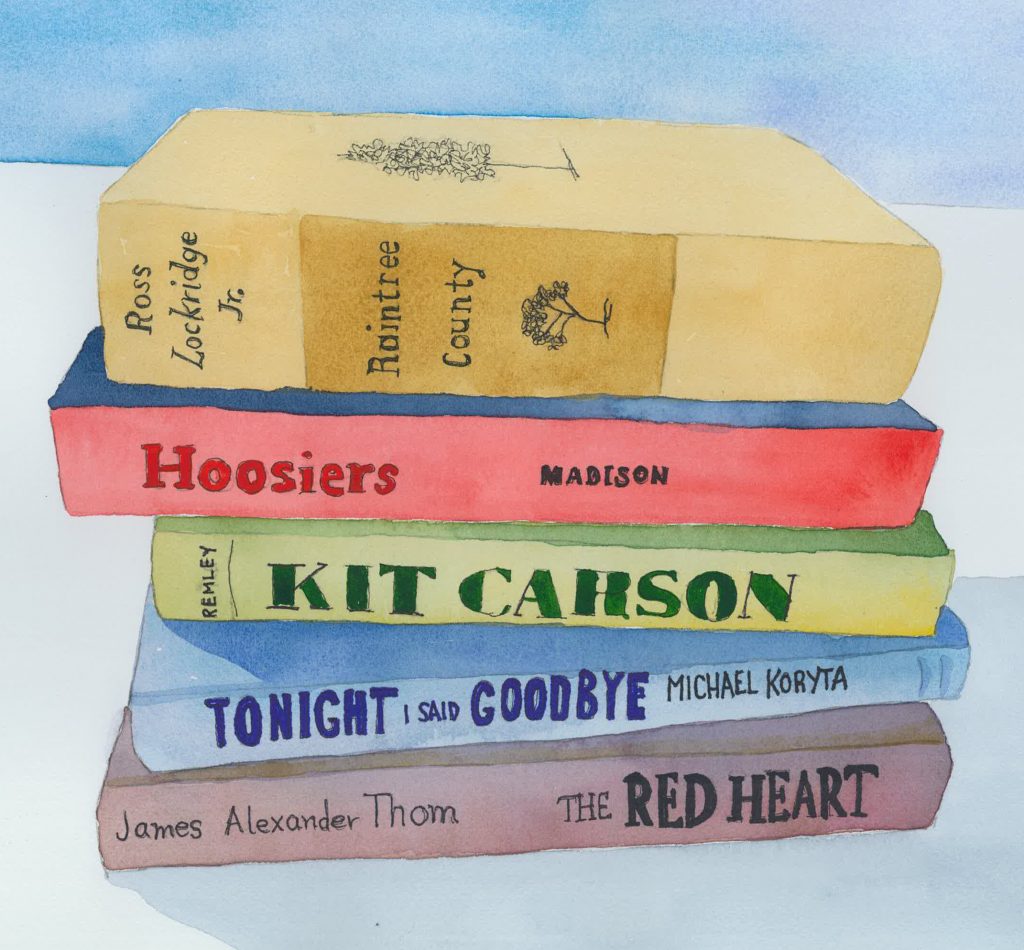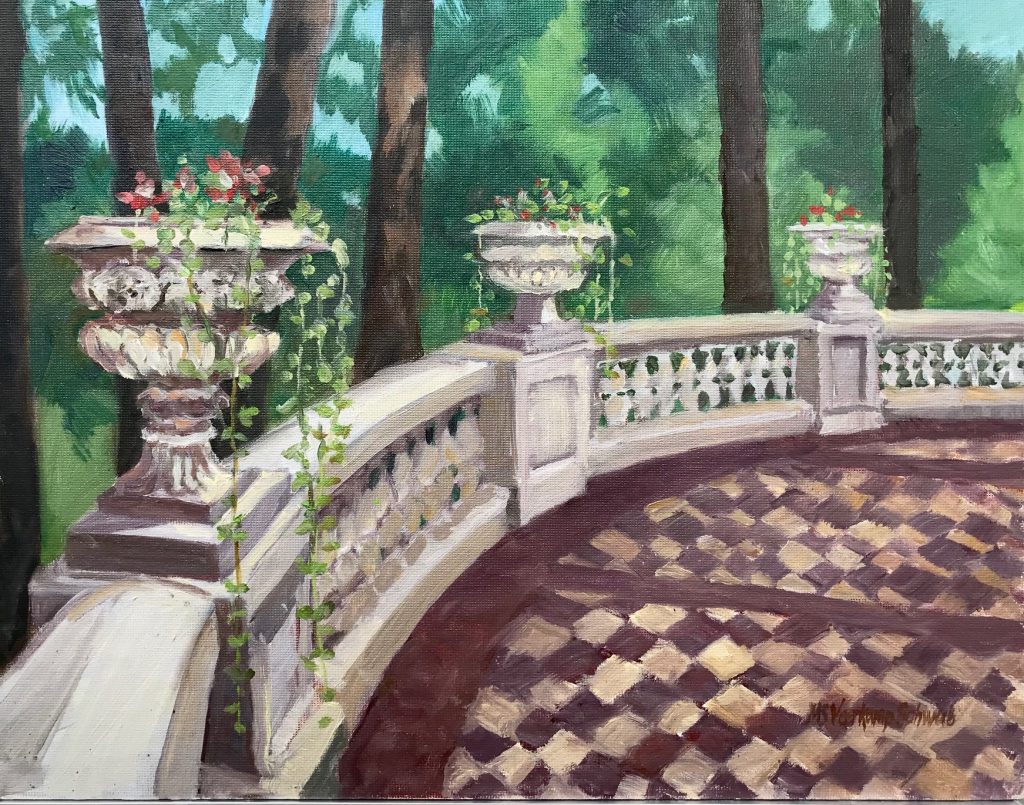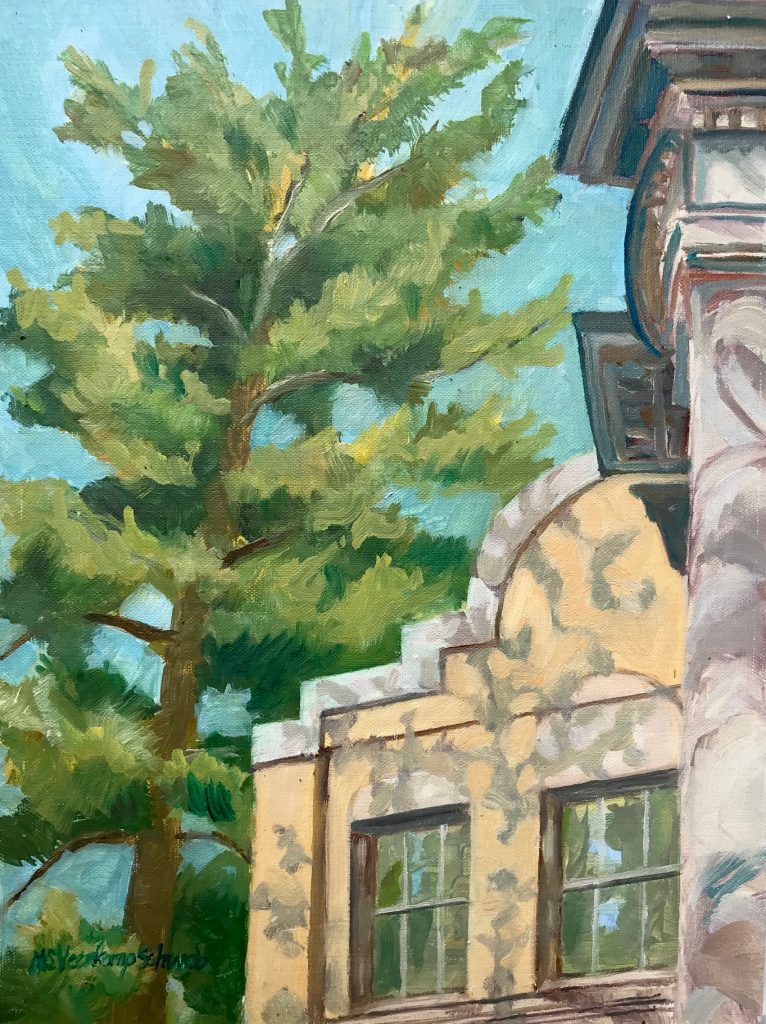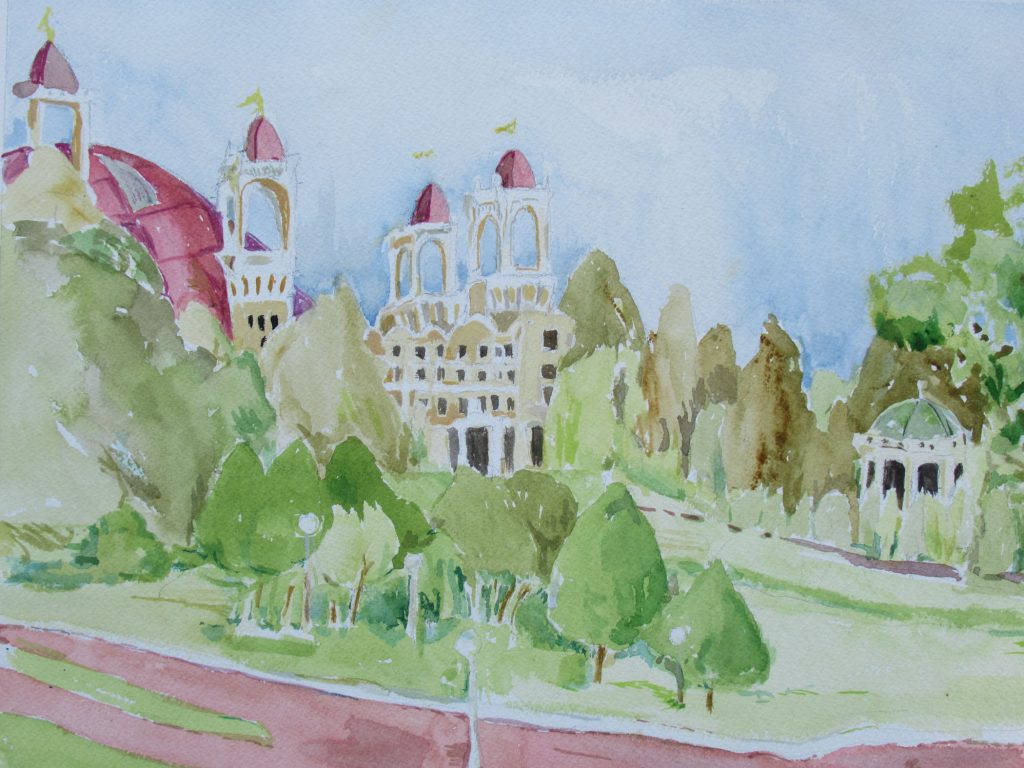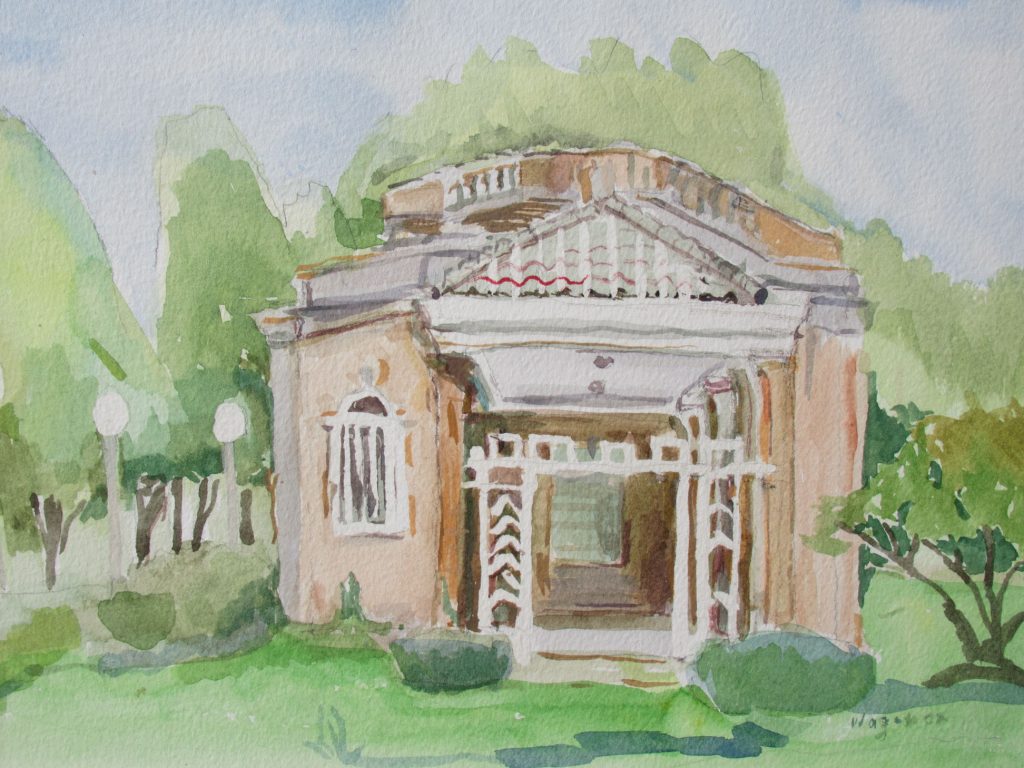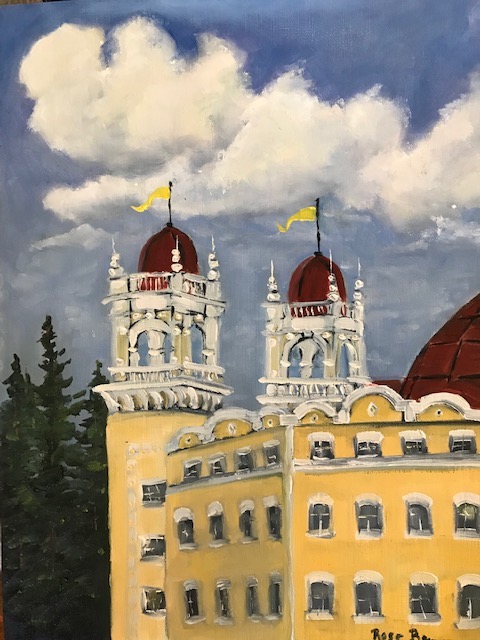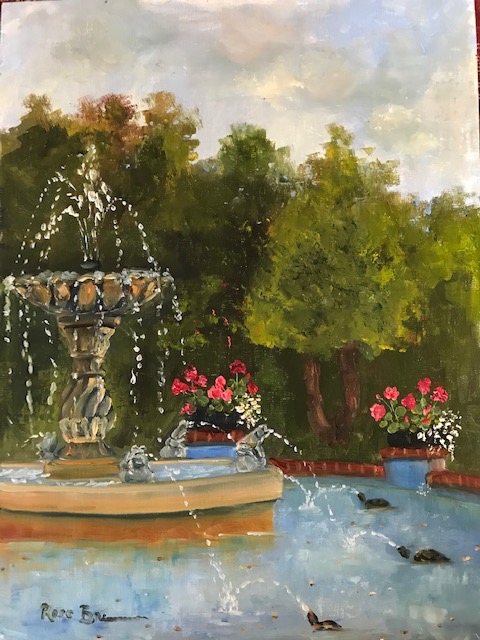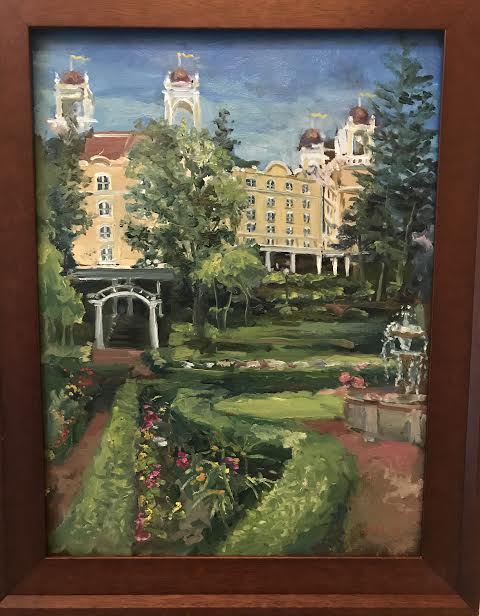September 9 Meeting
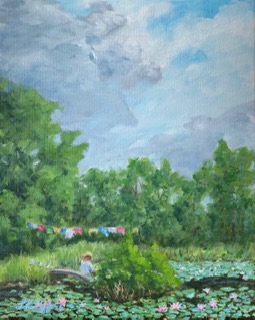
After a summer hiatus, Bloomington Watercolor Society resumes its monthly meetings Monday, Sept. 9. Members are asked to bring paintings they have worked on this summer for a “Show and Share” session.
The business meeting will start promptly at 6 p.m. with a refreshment break scheduled about 6:45 p.m. The “Show and Share” program will follow refreshments at 7 p.m.
The meeting is a St. Mark’s United Methodist Church on the bypass at 100 N. State Rd. 46, Bloomington.
Learning from others by sharing what we love is what BWS is all about so:
Remember to bring your paintings!!
BWS News
Presidential Update. Patty Uffman reports “GOOD NEWS!” Things are definitely moving in the right direction! These are some of the reasons we are kicking off this year on a good note:
· St. Mark’s has renewed our meeting space free of charge.
· Jo Weddle has confirmed a complete year of diverse programming.
· We have a new Plein Air Committee: Sande Nitti and Betty Wagoner have agreed to combine their talents to form the committee, which Sande will chair.
· Kathy Truelove-Barton has been named the ad hoc chair of the BWS “Painting Space Search Committee” looking for a place for members to go to paint together.
· Steve Dawson has extended an open invitation for BWS to have a paint out at his place.
Hinkle-Garton Farmstead Picnic Pickup. For those of you who participated in the Hinkle Farmstead Paint Out pickup will be on Wednesday September 4th between 10 a.m. and 1 p. m. Bloomington Restorations Incorporated (BRI) will be furnishing a meat and cheese tray. Participants are invited to bring a favorite side dish and gather for a pot luck lunch at the same time.
The Farmstead board is pleased with how successful the 2019 Hinkle-Garton paint out and open houses went. As a result BWS has been invited to paint on the farmstead through the fall season and consider having another show in the fall 2020. To paint on the grounds, call the number for BRI (812-336-0909) and leave a message for LeAnn or Steve. The areas around the hoop houses are off limits, but the houses, barns, and gardens are available. The large old maple trees near the house should be particularly beautiful this fall.
T-Shirt Design Contest. Deadline is September 6. The Month of Chocolate is February 2020. LIFEDesigns, in collaboration with the Bloomington Watercolor Society, is sponsoring a tee shirt design contest with a prize of $100 and, of course, a free tee shirt. This contest is open to everyone. (See lifedesign/t-shirt contest for more information).
Membership Show. This year’s BWS Membership Show will be held at the Untitled Light Gallery at the Mill (642 N Madison St., Bloomington). The reception will be on October 4 from 5-8 p.m. More details to follow. Jessica McKinney, our Membership Show Chair, needs 13 volunteers to help with the drop off, reception, and pick up of paintings.
Beyond BWS: September Opportunities
T.C.Steele, Indiana’s oldest plein air painting competition will be held at the T.C. Steele Historic Site (4220 T.C. Steele Rd., Nashville), September 14, from 7 a.m. to 4 p.m. Early bird registration ends August 31 but artists can register for the event even on the day of the competition. Categories for kids 12 and under, teens, and adults, will be judged beginning at 2 p.m. with awards announced beginning at 3:15 p.m. First place and People’s Choice winners will be on display at Brown County Art Guild following the competition until September 30. (For more information go to https//tcsteele.org).
Paint Columbus is a two-day event being held on Saturday and Sunday, September 21 & 22. Artists are invited to paint the iconic town. On Sunday at 3 p.m. all works will be exhibited, judged, and awards given at The Commons at 300 Washington St. At 4 p.m. work will be available for purchase to the viewing public. Paint Columbus is free and all skill levels are welcome. Artists can register by email: Janek@c21breeden.com.
Mallow Run Winery is continuing its Artist Series Wine Label Competition. Entries are now being accepted for the 2019 release! The deadline for submissions is Monday, September 30. The Artist Series Wine Label project features a special wine released each year featuring label artwork from an Indiana artist that is chosen from submissions. A portion of the proceeds from sales of this release will be donated to promote the Center Grove Arts Foundation and the Johnson County Community Foundation Mural Project. The winning artist will be celebrated in a reception at The Sycamore at Mallow Run in November, and the wine will be released to the public just in time for holiday celebrations. (For more information see https://mallowrun.com/artist-series/).
Persimmon Festival Art Show. Artists are invited to enter up to three paintings ($5 per painting as an entry fee) in the Mitchell Persimmon Festival which takes place on September 24 at the Mitchell Community Public Library (8th and Main). Artists must be 18 or older and must be current or former residents of Indiana. Paintings must be ready for hanging. No saw-tooth hangers are allowed. Ribbons and cash prizes in five categories will be given.
Membership News
Candi Bailey was juried into the Anderson Museum of Art Figures of Speech Show with a painting entitled “Black Sheep of the Family.” Candi was also awarded 2ndplace for her painting “B-town Authors” at the Venue’s Art & Soul of Bloomington Exhibit. BWS has a total of 12 entries in the show, 3 of which won recognition.

B-town Authors 
Black Sheep of the Family

Meri Reinhold’s painting entitled “Buddy Guy Plays the Blues” was juried into the 2019 Watercolor Society of Indiana Exhibition now showing until September 25 at the IMA at Newfields.
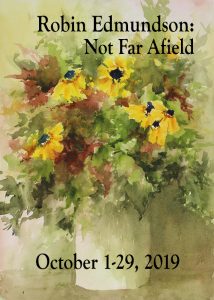
Robin Edmundson hopes to see you at her solo show entitled “Not Far Afield” being held at The Vault at Gallery Mortgage (121 E 6thSt., Bloomington). Her show runs from October 1-29 with an opening reception on Friday, October 4, 5-8 p.m.
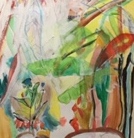

Lynne Gilliat shared her summer. “In May I went to Romania. I had a showing of my temperas and pastels at La Vie en Rose upon my return. The next month I showed the same show at the Unitarian Universalist church. I’m now working on making figurative studies over old watercolors. It’s working out well. I enjoy Claude Cookman’s portrait group and am experimenting with drawing and painting in tempera whole figures as well as portraits. I am excited to paint from my Romanian photos next!”
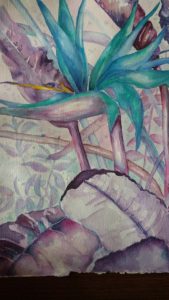
Nina Ost reported that she is still in Florida but will return to Bloomington around the middle of September. “Instead of doing pretty but boring paintings of Florida’s flowers, I’ve been taking a phone photo, switching it to negative, printing out a copy, and painting from that. Phone photos are always more vibrant than print outs. Also, I have returned to sketching in shapes with my brush and building the painting rather than first doing a careful drawing. I can often get fixated on the drawing part.”
Claude Cookman served as one of two judges for the Indiana Wildlife Artists’ annual competition on August 24. He and co-judge Leah Frenzel chose first, second and third place winners from more than 80 entries in five categories. The exhibition will hang at Second Presbyterian Church, 7700 N. Meridian Street, Indianapolis, through September. Details at: http://indianawildlifeartists.org/judges.htm]
Deborah Rush currently has a show at the Unitarian Universalistic Church. She invites everyone to come and enjoy her art work.
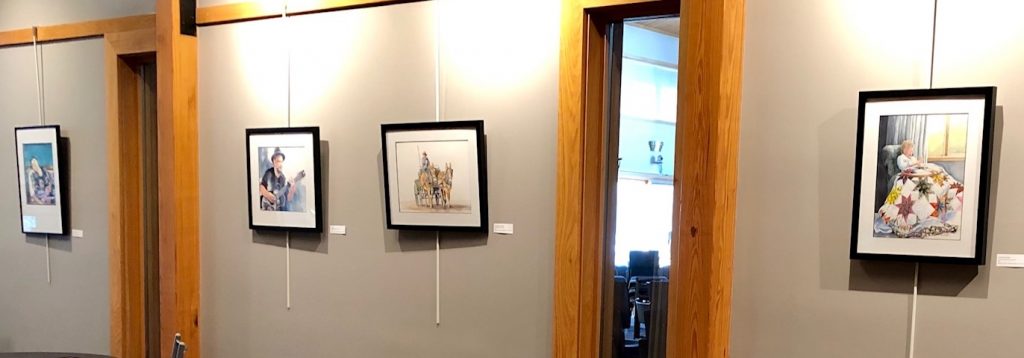

Kitty Garlock reports that she and Betty Wagoner, Anne-Karine Bley, Henry Leck, Kathy Barton, MarySue Walker, Bill Schwab, Don Geyra, and Rose Brenner participated in the paint-out at the West Baden Resort in French Lick. Each artist painted from one to four pictures of the wonderful sites around the grounds and on the veranda. The days were gloriously blessed with mild weather and gentle breezes and, with the exception of a threatening thunderstorm that passed rather quickly with only a spit of rain, were perfect for painting. Kitty reports, “A few of us even got a nocturnal painting!” Saturday at 2:00 pictures were placed on display and voted on by the artists, hotel guests, and site visitors. Inside a wonder repast of hors d’oeuvres and wine were served “It was wonderful!! And to top it all off, three paintings by our group were sold!!”

MarySue Schwab 
MarySue Schwab 
Betty Wagoner 
Betty Wagoner 
Rose Brenner 
Rose Brenner 
Don Geyra 
Kitty Garlock
Nancy Metz shared what she learned from a week at the Art Institute in Chicago:
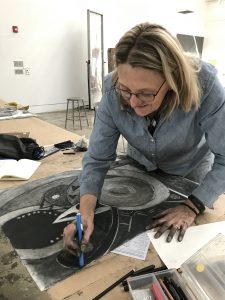
Spending five days at the Art Institute of Chicago sounded like a dream: endless hours with some of the world’s best paintings, studio space at the School of the Art Institute, a Blick’s art supply store within walking distance, and a friend and colleague to share it with.
When Carol Rhodes and I registered for SEEING the Art Institute of Chicago, a summer intensive one-week class offered by the School of the Art Institute of Chicago’s Continuing Education, we were apprehensive about how our drawing skills would measure up against the other students, so we found online videos and met to improve our graphite and charcoal skills.
I learned Carol does beautiful work in black-and-white dry media. She would be observing and placing her marks on the paper, adjusting values as needed, and building toward a finished image. I, on the other hand, would be on my second or third version of our subject as she was finishing her first. I realized then that I habitually hurry through the drawing stage, my goal being to place as few marks as possible so I can get to my paints.
At that point, I said to myself: “Oh well, who cares if I am the worst in the class. I have paid my money, and I will enjoy this experience.”
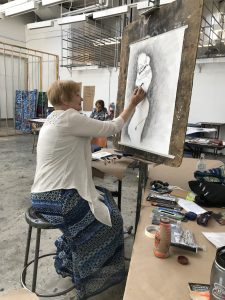
Carol Rhodes works on her charcoal drawing of a Rodin sculpture from the Art Institute’s collection.
As it turned out, the ten students represented a range of artistic abilities and interests, and our instructor, Nancy Murphy Spicer, used her training as an art coach to help each of us shape our Art Institute experience.
Our mornings started in the studio with Spicer suggesting ways to approach an artwork and different focuses for our sketching. As soon as the museum opened, we had free rein to sketch in the galleries. After lunch, we worked in the studio on developing our individual projects based on our interests. Spicer and Ishita Dharup, the teaching assistant, would periodically demonstrate charcoal, pen, or graphite techniques that students could join in if they wanted.
The class wasn’t focused on technique, however. The idea was to tap in to the resources of the Art Institute and build a personal experience from there. I latched on to the idea of finding one painting that captured my attention and visiting it each day. Of course, my first stop was 20thcentury American paintings where I found works by Georgia O’Keeffe, Charles Demuth, Charles Sheeler, and Edward Hopper. I rounded the corner and there it was: My One – the painting I would visit each day – “Movements” by Marsden Hartley. Colorful shapes spiraled on the canvas, and it looked like rock ‘n’ roll – even though it was created about 40 years before that music genre was invented.
That afternoon, I discussed with Spicer the challenge of creating a back-and-white version of such a colorful painting, and that led us into looking at the painting’s values. The next thing I knew Spicer had me covering a 22 x 30 sheet with solid charcoal and using erasers as my drawing utensils. The first piece took two days to complete, but after a student critique session, I knew I wanted to see if I could create the negative of the value study I had just done. That took only one day but a lot of concentration. Turning blacks into whites and vice versa is easy; the challenge is in translating those middle values. Having completed two studies using the charcoal erasing technique, I was pretty comfortable in tackling a Marsden Hartley landscape with the same tools. That one took one afternoon. The landscape was necessary to establish how far a departure “Movements” was from the Hartley paintings I was familiar with.
Friday afternoon we hung our show on the studio walls and discussed each other’s works. Spicer had created a community of artists willing to share ideas, suggestions, and materials. Drawings large and small and even a 3-D presentation of classic urns had sprung forth during the week. Some were based on the Art Institute’s collection, some were in-depth studies of a chosen artist, and some were personal subject matter.
That is the School of the Art Institute of Chicago class in a nutshell. It is only my experience. I know Carol’s journey unfolded differently, and I am confident the other eight students each had unique experiences.
Here are a few more lessons I learned while roaming the Art Institute:
Lesson #1: Always carry a sketchbook and pencil. In the museum, free yourself from “copying” a work. You can sketch the painting’s composition or make a gestural drawing of a figure in the painting. You can capture the painting’s values. Make a diagram or notational drawing of the work. Any of these strategies will lead you further into the work. Try to spend 10 to 15 minutes with a piece.
Lesson #2: Don’t be in a hurry. Stand before the work that interests you. What is the affect of the artwork: Do you have an involuntary physical or emotional response? What has the artist made you look at? Move slowly toward it. How does it change as you move closer?
Lesson #3: Trying a new medium and technique can unlock your creativity. I spent four consecutive afternoons erasing. I was using black instead of colors. I was subtracting instead of adding. For several hours I had to think about everything I was doing. And suddenly, my mind was racing with ideas about how to accomplish the range of values in the piece I was working on, what the next piece would be, and the next one, and so on.
Lesson #4: Critiques come in many forms and are often more useful when they have some structure. One of my favorites was a See/Think/Wonder exercise. Each student hung their work from the previous day, and students were given small sheets of paper on which they were to write one See statement, one Think statement, and one Wonder statement for each piece. Then, each student had a few minutes to talk about their work before receiving their classmates’ critique sheets. Because the comments were written before each artist’s talk and without hearing others’ reactions, the critiques provided a wide range of ideas to think about.
Lesson #5: Drawing is a valuable tool for information gathering. Each visit to Hartley’s “Movements” yielded new information. One day I found circles that had gone unnoticed. Another day revealed proportions were off in my original sketch. Another information gathering operation was my afternoon charcoal-erasing sessions. As the image developed out of the black charcoal, I was constantly adjusting values and, at one point, realized this work I had viewed as a collection of shapes was pretty weak without the carefully placed lines. I plan to adjust my painting process to include some more developed drawings before I start a painting. I might first make a charcoal drawing of my subject matter just to learn about it before I make those sketchy lines on my watercolor paper.
Lesson #5 is not new. Artists have been doing preliminary drawings forever. But I rarely have done more than a quick thumbnail to work out composition and values, and even those had trailed off in recent years. Of all I learned in my week in Chicago, this is probably the most important.
Oh yes, I also learned it really isn’t such a good thing to be within walking distance of an art supplies store. Carol and I both had to swear off Blick’s by mid-week.
______________________________________
If you’re interested in the School of the Art Institute of Chicago’s Continuing Education program, visit continuing studies.saic.edu.
MarySue Schwab reviewed an Honorary Mention for her painting “Secluded Pool” from the Hoosier Salon in New Harmony.
IMO
These questions were posed to BWS members currently teaching courses:
Question 1: “What is the best tidbit of advice you give to students in your classes?
“Let it dry!” Linda Meyer-Wright
“The first piece of advice that comes to mind, which really seems to click with my high school students, is to avoid falling prey to your mental “autocorrect” while drawing or painting. High school students are very aware of the awkwardness that the autocorrect function can play on their texts and emails and it doesn’t take them long to realize they each have a mental autocorrect too. Their mental autocorrect will start overriding a drawing – telling them what they “should see,” not what they actually see. Doing more work from observation, not labeling objects, and looking for how abstract shapes fit together in a source image all help to develop a larger autocorrect vocabulary and reduce its helpful mistakes. More important is noticing when it kicks in, forgiving yourself when it does, and actively practicing.” Cassidy Young
“ALWAYS do a value painting before doing the completed colored painting. Make the value painting small, 8 x 10. Notice the placement of objects in the study. Is there an interesting balance? If not, change the study. Correct the values. A good study makes a good finished painting. You will have more confidence by doing a value study first.” Jacki Frey
“I tell students not to worry about finding the “right way” to do watercolor. There are lots of ways to paint with watercolors. Learn the basic washes and brushstrokes and all will reveal itself — if you let it.” Nancy Metz
Question 2: What if any effect has teaching art had on your own artistic process?”
“Teaching keeps me on my toes – I learn new stuff so I can teach new stuff. I try to stay about 10 minutes ahead of the class.” Linda Meyer-Wright
“Active practice and forgiveness are keys to my own art practices. They keeps me from setting down the brushes for too long.” Cassidy Young
“Teaching has helped my own paintings. To have a good painting for my demos I have to be prepared. I put a lot of time into painting for a class. I also learn from what students may paint.” Jacki Frey
“Teaching “Painting Styles of the Masters” has affected my artistic process more than any other class I have taught. Now, when I start a painting, I think how would different artists approach this subject. I might even do a few small painting sketches in the styles of different artists to see what I like best.” Nancy Metz
